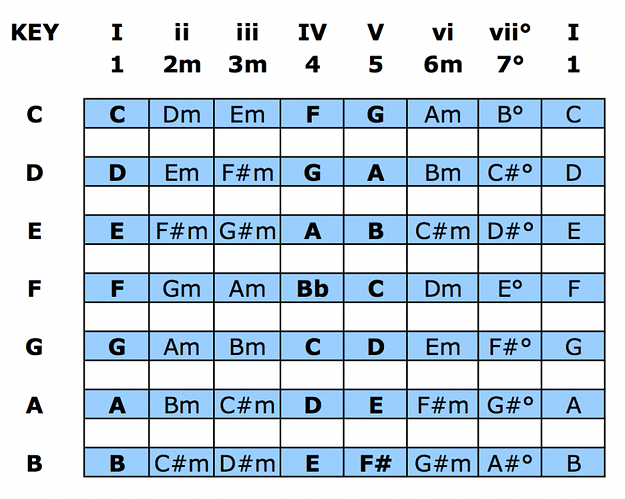Great advise @John_E…
We all learn our own way…. Many here know that I don’t do tabs - yet I know how they work,… I don’t do notation - yet I know how it works,…. I don’t do Nashville numbers - yet I know how it works…. You just need to find a way that works best for “YOU”…… Knowing these things is ALWAYS good - setting them as your preference is totally up to you…
I’m dyslexic - have been my entire life, so “seeing” things like tabs and notation have (and still to this day) screw me up…. As a result, I devised my own way of making things work “for me”…. I still to this day use my own form, and have also taught it to my kids and grandkids whether on guitar or bass…
Every song is played in a specific key. Every song’s structure has it’s own “road map” that can include one or more of those 8 notes in that key. I teach them to learn the basic road map first - don’t worry about all the “fluff” in between those basic root notes - just focus on those root notes because they are the “basic road map” for a song…
It’s kinda like if you were to take a road trip from Atlanta to Dallas…. The “main” (fastest/easiest) route is always the same - the fluff (or fills) are like taking side roads that are always more fun and interesting, but you will always come back to the main route… otherwise, you can get lost…. So, the root notes are always the main route. Learn them FIRST, and learn to be in time with them (timing being the “speed limit”….
Once you can get from point A to point B, and stay at the speed limit, it is then (and only then) when you can begin to take those “side roads” and experience different scenery (cool fills)…
Bing dyslexic, when I look at either tabs or notation, my brain gets confused. When I look at bass tabs, I see 4 lines with numbers (same with notation with dots on lines). My brain has never been able to keep it all straight (guitar was even worse) so, what I’ve learn to use for myself was to create my own transcription language that works for me…
Instead of lines and numbers (or black dots), I always start out transcribing the main route using the string I will play the root note on along with the fret number that the root note is to be played on. For instance, “A-5” would mean “A string 5th fret” and so on…. I never map out any of the fills between root notes since they are the side routes that could change depending on how I feel like playing the song at the time… this is where using your “ear” comes in handy…
The trick is, to ALWAYS learn the road map (roots), and ALWAYS stay within the speed limit (timing). From there, the sky’s the limit!!

Keep on Thumpin’!
Lanny






